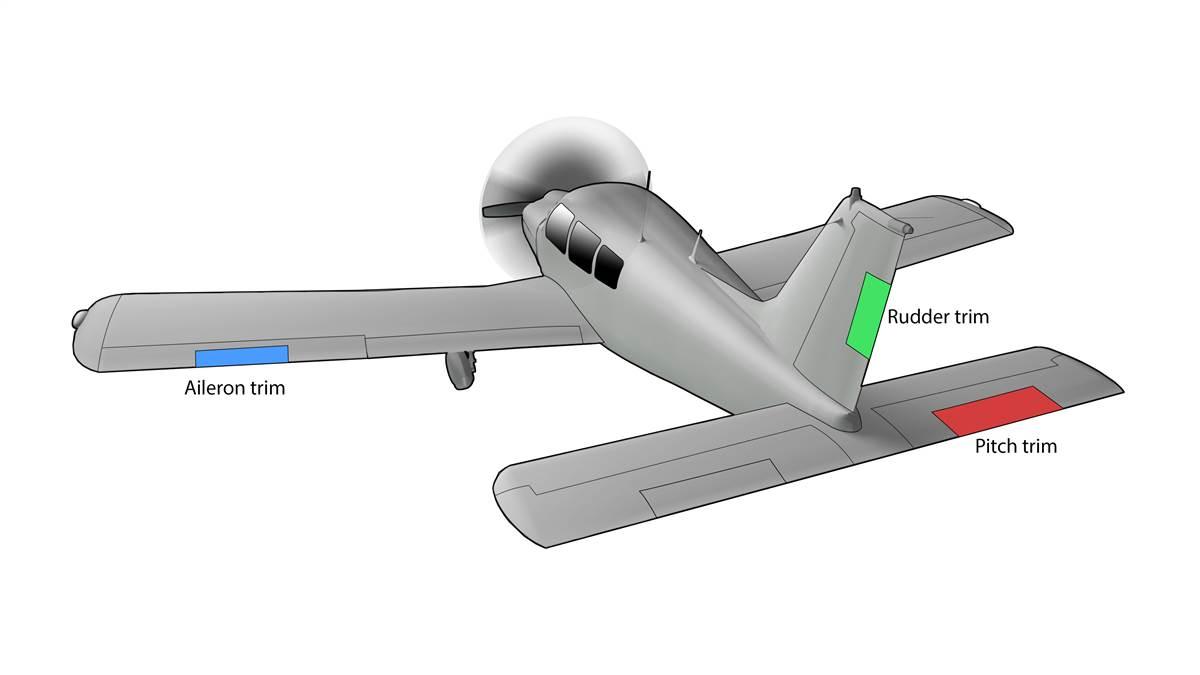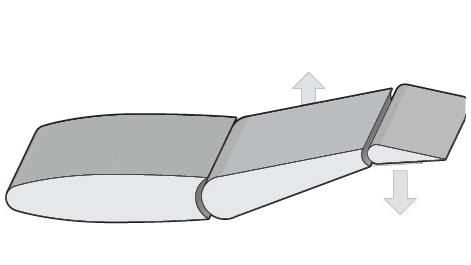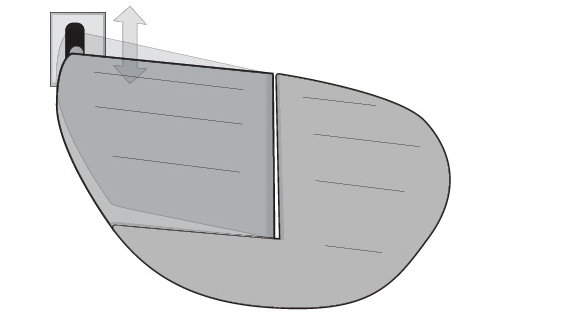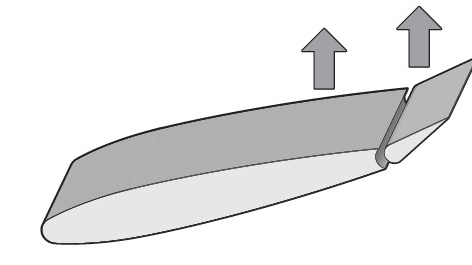
My flight instructor was always fiddling with the trim wheel. It was located in the console between our seats, a black wheel with bumps. Rolling it up changed the pitch to more of a nose-down position and rolling it down did the reverse. I understood he was adjusting to keep us level, but it bugged me—and it contributed to my lack of understanding of the trim tab.
Factors such as wind, power settings, airspeed, and attitude affect the control inputs required by a pilot and can lead to herky-jerky overcompensations or constant, tiring pressure on the controls. The ability to adjust the trim and relieve control pressures must be a stress reliever for the ever-patient instructor. Changing the setting of the trim tab adjusts the neutral position of a control surface, such as the elevator or rudder. The trim tab allows its operator (in this case, my flight instructor) to reduce the manual inputs needed to maintain position.
The basic trim tab is attached to the trailing edge of the aircraft’s elevator. The elevator trim is adjusted by rolling the little black wheel forward (up) and the aircraft nose goes down. Roll it backward, and the aircraft nose goes up. Some aircraft have rudder trim, which can be used to help compensate for an airplanes’ left-turning tendencies or adjust for a tendency to pull in one direction in cruise.
My colleague told me she has a trim wheel in her Piper Cherokee 140 that is overhead in her aircraft and when she reached up to crank it on her first flight with her husband he asked, “Now, what are you doing?” But, as she was adjusting for a smooth landing for him, she was too busy to explain. With proper use of the trim tab, you can appear to be a smooth operator when you’re really still a herky-jerky new pilot.
Perfect pitch
The venerable P–51 Mustangs were equipped with a long-range fuel tank behind the cockpit to allow them to cross the Atlantic during World War II. The P–51’s original design was not configured to carry that much weight so far back in the fuselage, so the trim had to be adjusted far forward for the first part of the flight and slowly adjusted back as fuel was used. This avoided the excess drag—and too much fuel consumption—because of the nose-high attitude as the P–51 motored toward Europe.

 Trim tab
Trim tab Stabilizer trim
Stabilizer trim Antiservo tab
Antiservo tab

